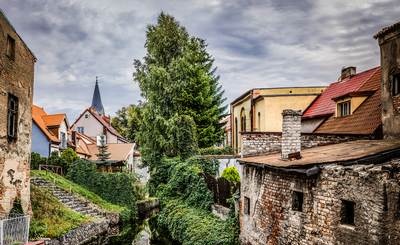|
 Scotland, like a skirt made of cages, is woven of many colorful features: here you can hear a real bagpipe, see men in the above-mentioned details of women's dress, visit Loch Ness and admire the mountain peaks covered with heather. You can get acquainted with the life of such different Scots - townspeople and villagers, highlanders and those living on the plains. You can see how tweed is made with your own eyes and taste real Scotch whiskey! Scotland, like a skirt made of cages, is woven of many colorful features: here you can hear a real bagpipe, see men in the above-mentioned details of women's dress, visit Loch Ness and admire the mountain peaks covered with heather. You can get acquainted with the life of such different Scots - townspeople and villagers, highlanders and those living on the plains. You can see how tweed is made with your own eyes and taste real Scotch whiskey!
Scotland is the most independent part of Great Britain, with its own legal system, parliament and "purely Scottish" church. This country is located in the north of insular Great Britain and borders on England in the south. The capital of Scotland is Edinburgh.
The history of Scotland is recorded in written sources from the time of the Roman conquest. The united kingdom of the Picts and Scots appeared on the map of the island in 843. The following centuries were spent in wars with England for independence and border territories. Kings and dynasties replaced each other, the policy towards immigrants changed, due to which waves of resettlement passed through the territory of present-day Scotland, until by the end of the Middle Ages the population was divided into two zones: the plain, where the Anglo-Scottish language was used, and the mountainous, where Gaelic was spoken. In 1707, when the "Act of Union" was signed with England - in other words, unification, Scotland had already acquired its own church and parliament. In the following centuries, the country experienced an economic upsurge, and at the end of World War II, economic stagnation.
What is the most "Scottish" word you know? Many of you will say - “whiskey"! Here it is called "scotch" and has been in production for over five hundred years! Many factories scattered across the country and producing this strong drink organize excursions for those wishing to observe the process of whiskey making and take part in its tasting.
Another attraction of this country is the numerous lakes, sometimes lost in fabulously beautiful and mysterious places. One of them - Loch Ness, is known not so much for its size (and it is the second in Scotland in terms of area, and the first in terms of fresh water volume), but the “Loch Ness Monster”, in search of which numerous enthusiasts and tourist groups ply the waters of the lake.
 By the way, about tourism. They say that the Scots, in addition to their, how to put it more delicately ... heightened frugality, are also famous for their outstanding enterprise. Residents of Scotland were able to "promote" the tourism business to the world level, using local attractions as a "bait" for tourists. And there really is something to see here! By the way, about tourism. They say that the Scots, in addition to their, how to put it more delicately ... heightened frugality, are also famous for their outstanding enterprise. Residents of Scotland were able to "promote" the tourism business to the world level, using local attractions as a "bait" for tourists. And there really is something to see here!
First, you can visit the largest cities in the country - Edinburgh and Glasgow. The central part of the capital of Scotland - Edinburgh has been declared a UNESCO World Heritage Site. The main attraction of the city is Edinburgh Castle, built on top of an extinct volcano! The impregnable fortress, protected by sheer cliffs on three sides, has a lot of architectural monuments on its territory.
Glasgow is the largest industrial center of Scotland, with a mass of architectural monuments and modern high-tech buildings, at one time was considered the most significant, after London, city of the empire. And now it is a place of pilgrimage for tourists from all over the world.
Each region of the country has its own attractions: reserves, castles, estates of tribal leaders, and in the highlands of Scotland - the pride of the country, wonderful ski resorts. Much of the popularity of Scottish culture is due to its Celtic roots.You may not suspect that both country music and Tolkien's Lord of the Rings trilogy have Scottish, or rather Celtic origins. We cannot even imagine to what extent the Scottish culture has penetrated into our everyday life, into our lives. To understand this, there is only one way - to go to Scotland!
Svetlana Viktorovna
|
 Scotland, like a skirt made of cages, is woven of many colorful features: here you can hear a real bagpipe, see men in the above-mentioned details of women's dress, visit Loch Ness and admire the mountain peaks covered with heather. You can get acquainted with the life of such different Scots - townspeople and villagers, highlanders and those living on the plains. You can see how tweed is made with your own eyes and taste real Scotch whiskey!
Scotland, like a skirt made of cages, is woven of many colorful features: here you can hear a real bagpipe, see men in the above-mentioned details of women's dress, visit Loch Ness and admire the mountain peaks covered with heather. You can get acquainted with the life of such different Scots - townspeople and villagers, highlanders and those living on the plains. You can see how tweed is made with your own eyes and taste real Scotch whiskey!






